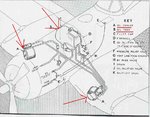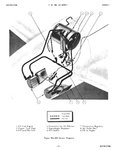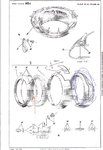- Thread starter
- #121
Hi Nikademus,
>The thicknesses appeared enough to provide the same "ping" effect described by Wildcat pilots who recounted their experiences being riddled by gunfire.
Hm, do you know the actual thickness for the SBD? I didn't find anything on that, I'm afraid.
Regards,
Henning (HoHun)
Hello.
No, Lundstrom did not mention specific thicknesses. Some of the battle accounts describing Zero attacks on SBD's matched descriptions on attacks of the F4F's. From these it would appear the SBD displayed similar ruggedness in the face of being sprayed by 7.7's and the occasional. The 7.7's had a hard time even when many hits were scored. Cannon hits did better but didn't always lead to the plane's demise. (not immediately at least) During Coral Sea, a VS-5 element endured a Zero attack which was pressed home. Despite numerous hits none were lost. Specific mention was made that the self sealing tanks in particular had handled 7.7mm hits very well. (hence my curiosity about how well Stuka tanks fare under similar hits)





